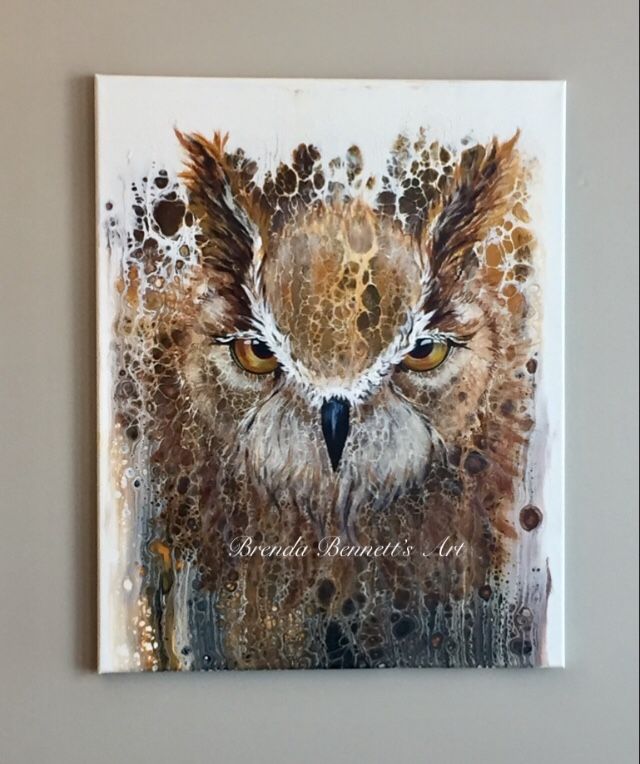Owls, those enigmatic denizens of the night, have long captured the human imagination. Their piercing gaze, silent flight, and haunting calls evoke a sense of mystery and wisdom. It’s no surprise, then, that they are frequently chosen as subjects for artistic endeavors. This exploration delves into ten captivating acrylic paintings of owls, each offering a unique perspective and igniting a spark of inspiration for your next creative project. Prepare to be mesmerized by the diverse techniques and styles on display, promising a shift in your artistic perception.
1. The Intricate Detail: A Study in Feathers
Imagine an owl rendered with painstaking precision, each feather meticulously depicted in acrylic paint. This approach focuses on hyperrealism, demanding patience and an acute understanding of avian anatomy. The subtle gradations of color within each feather create depth and texture, drawing the viewer into the intricate details of the subject. This technique is especially effective for showcasing the unique plumage patterns that differentiate various owl species. Consider how blending techniques and layering can bring this vision to life.
2. Abstract Expressionism: Capturing the Essence of Flight
Forget representational accuracy. Here, the goal is to convey the feeling of flight, the silent swooping motion, and the inherent wildness of the owl. Bold brushstrokes, splatters of color, and a sense of uncontrolled energy define this style. The owl may be barely recognizable, its form suggested through gestural marks and vibrant hues. Think Kandinsky meets ornithology. This method requires you to abandon preconceptions.
3. Pointillism: A Symphony of Dots
Inspired by the likes of Georges Seurat, this technique involves building up the image using countless tiny dots of paint. The optical blending of colors creates a luminous effect, giving the owl a soft, ethereal quality. This approach demands meticulous planning and execution, but the results can be truly stunning. It’s a process that will test your patience.
4. Palette Knife Magic: Sculpting with Paint
Abandon the brush! A palette knife allows you to create thick, impasto textures, adding a sculptural dimension to your owl painting. The rough, uneven surface catches the light in interesting ways, creating a dynamic and tactile effect. This technique is particularly well-suited for depicting the rugged landscape that owls often inhabit. Experiment with different angles and pressures to achieve varying textures.
5. Monochrome Majesty: Exploring Tonal Variations
Limit your palette to a single color – perhaps sepia, Payne’s grey, or burnt umber – and explore the full range of tonal values. This exercise forces you to focus on form, light, and shadow, creating a dramatic and evocative image. A monochrome owl can possess an austere beauty, highlighting the inherent elegance of its silhouette. It will challenge your understanding of value.
6. Surreal Dreamscapes: Owls in Unlikely Settings
Transcend the mundane by placing your owl in a fantastical environment. Perhaps it perches atop a giant mushroom in a luminous forest, or it soars through a star-studded sky filled with floating islands. This approach allows you to unleash your imagination and create a truly unique and unforgettable image. Let your subconscious guide your brush.
7. Geometric Abstraction: Deconstructing the Form
Break down the owl into its fundamental geometric shapes – triangles, circles, squares – and reassemble them in a non-representational way. This approach challenges the viewer’s perception of reality and forces them to engage with the underlying structure of the subject. This style is influenced by Cubism and requires a deep understanding of form. Embrace the unexpected.
8. Folk Art Whimsy: A Touch of Naiveté
Embrace a simplified, childlike style with bold colors, flat shapes, and decorative patterns. This approach lends a charming and whimsical quality to your owl painting, making it feel approachable and endearing. Don’t be afraid to deviate from realism and embrace your own unique artistic voice. Honesty is key.
9. Luminescent Glazing: Creating Depth and Translucence
Use thin, transparent layers of acrylic paint – known as glazes – to build up color and depth gradually. This technique creates a luminous effect, giving your owl a sense of inner radiance. It requires patience and a careful understanding of color theory, but the results can be breathtaking. Translucency will enrich the work.
10. Mixed Media Marvel: Incorporating Unexpected Elements
Don’t limit yourself to paint! Incorporate other materials into your owl painting – collage, fabric, found objects – to add texture and visual interest. This approach allows you to experiment with different techniques and create a truly unique and personalized work of art. Let your imagination run wild and see what unexpected combinations you can discover. Push the boundaries.
